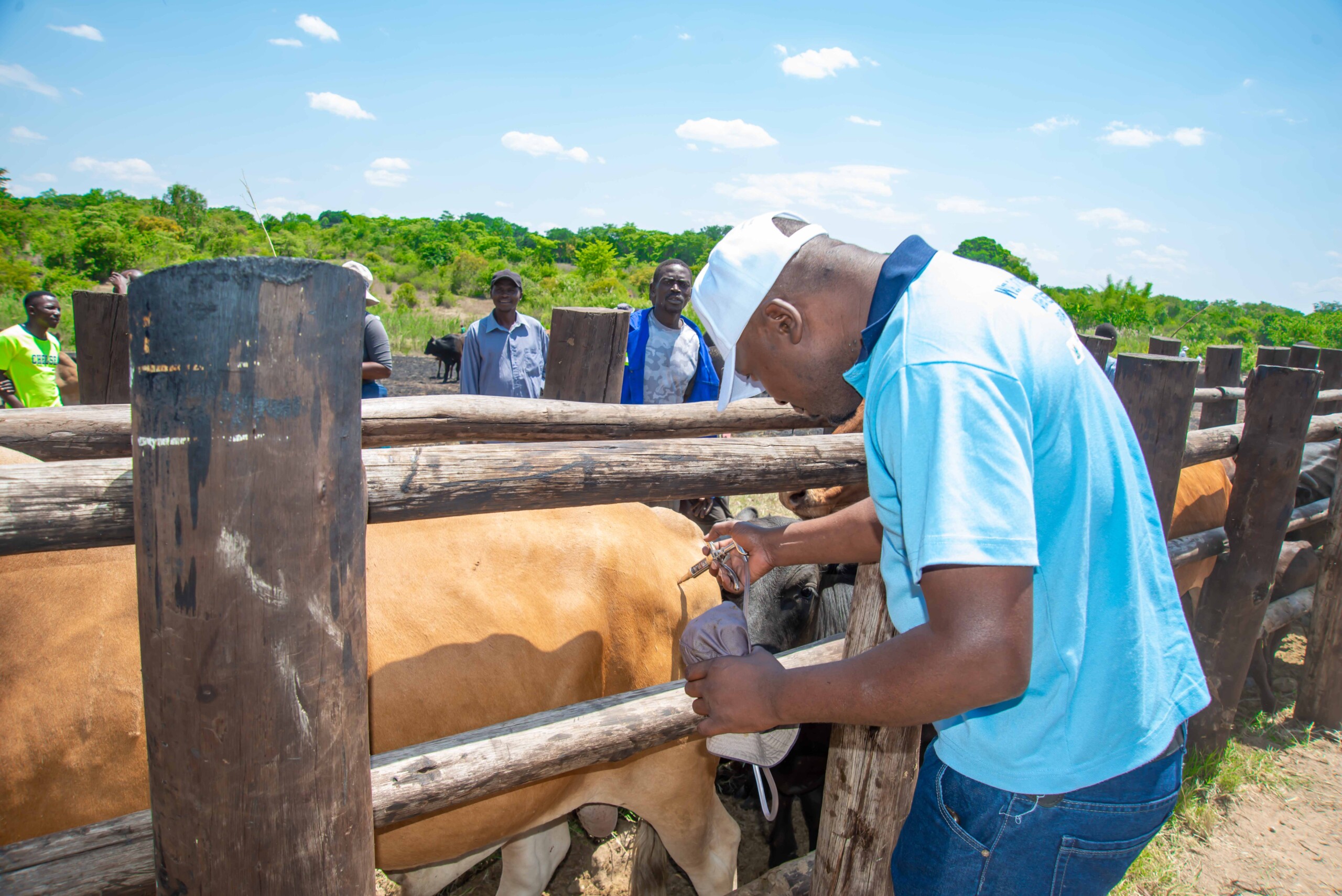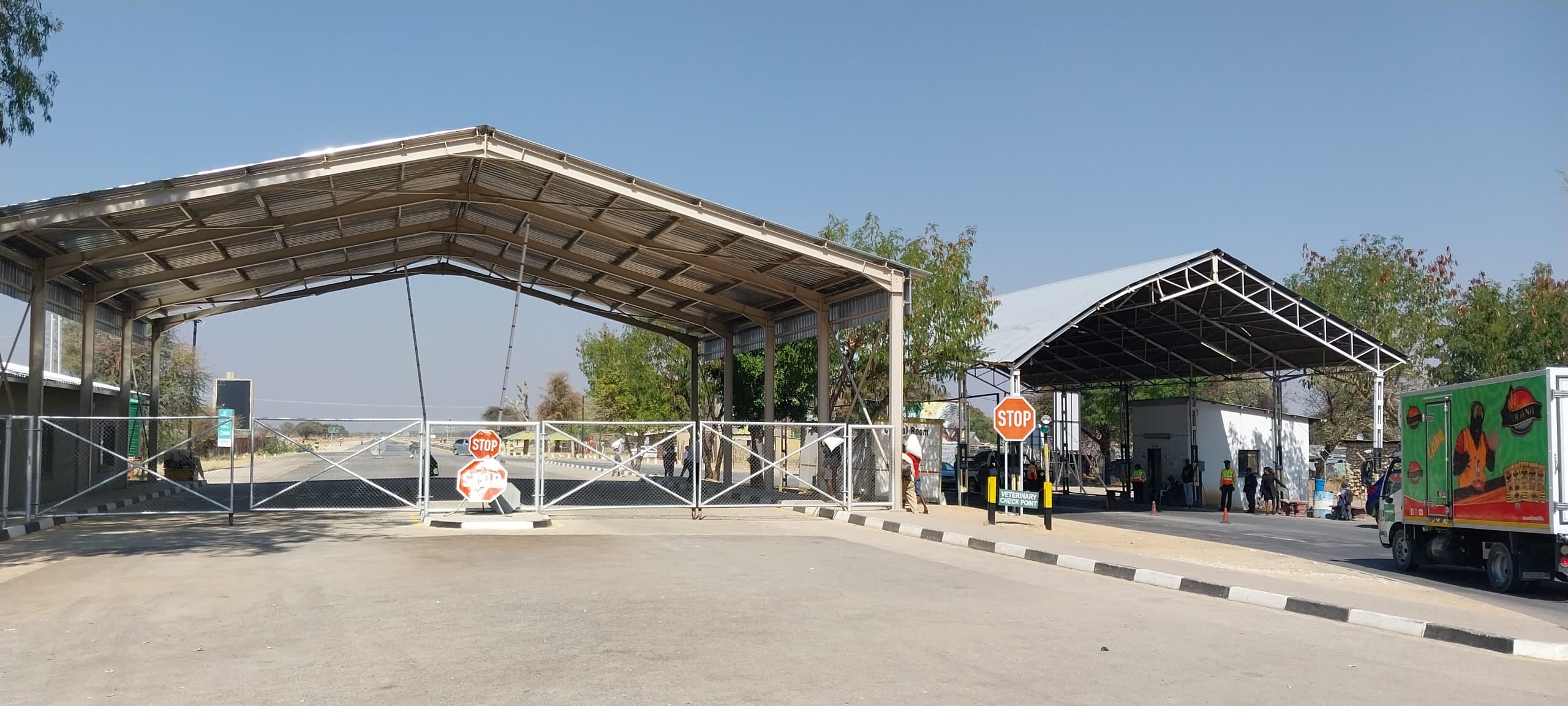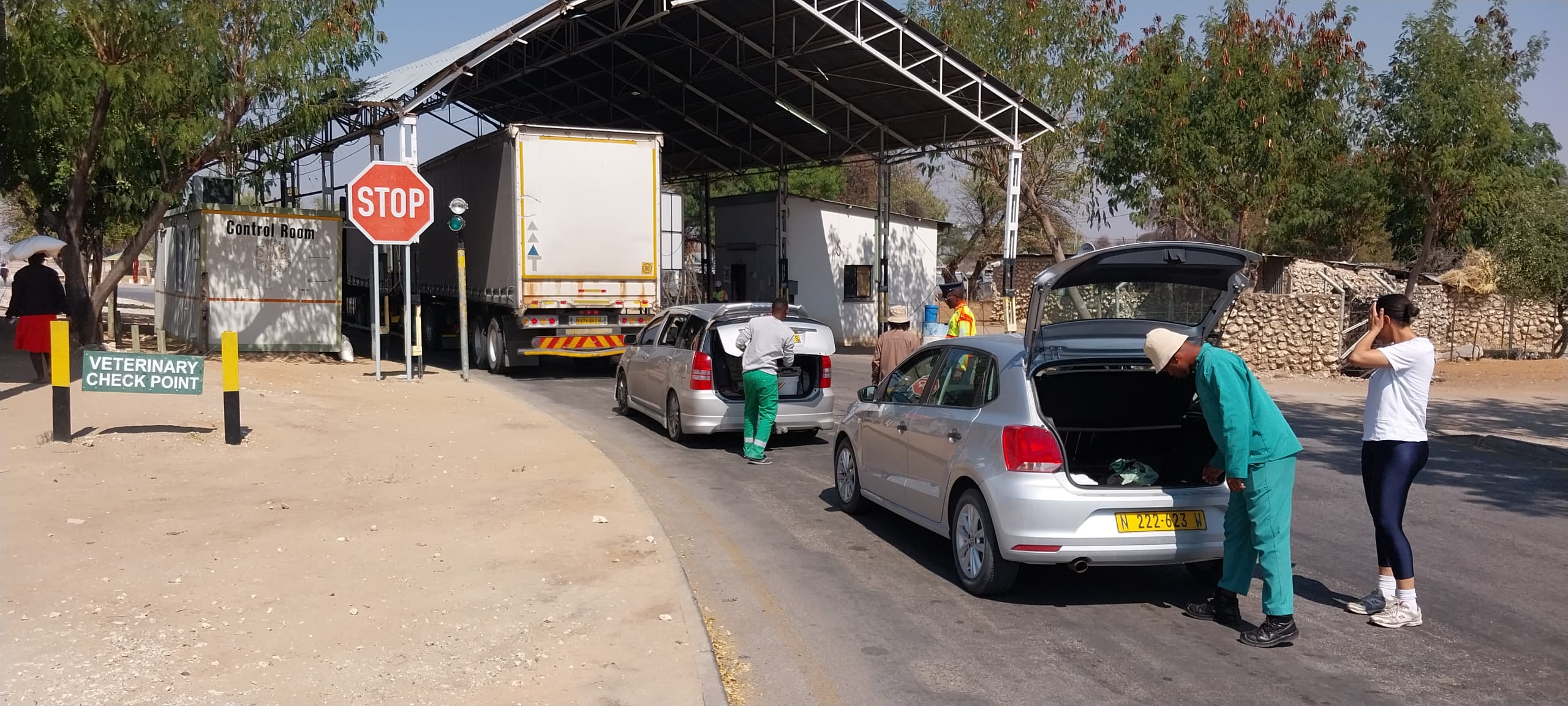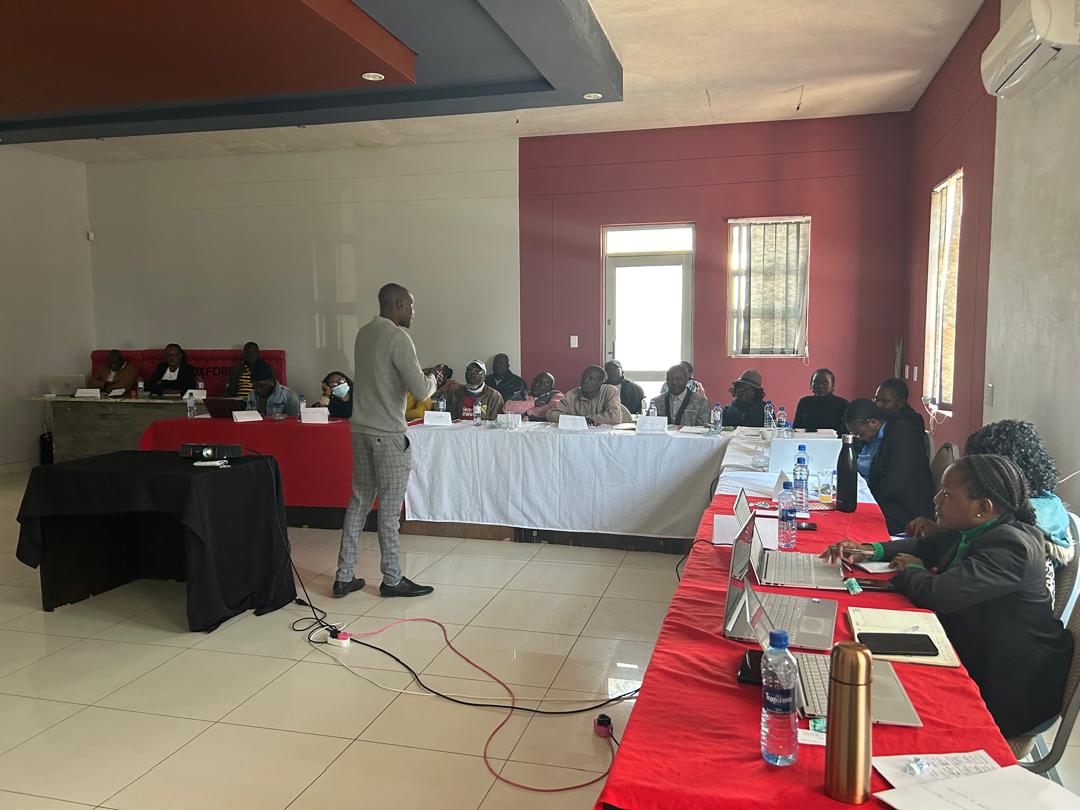
Namibia has a WOAH-recognised Foot-and-mouth disease (FMD), Peste des Petits Ruminants (PPR) and Contagious Bovine Pleuropneumonia (CBPP) – free zone which is south of the Veterinary Cordon Fence or VCF (game and stock-proof double-fenced corridor) where vaccination is not practiced and allows it to export animals and animal products to other countries with minimal sanitary restrictions. The area north of the veterinary cordon fence is called the Northern Communal Area (NCA), is a Protection Zone and comprises seven regions: Oshana, Oshikoto, Omusati, Ohangwena, Kavango West, Kavango East, and an Infected Zone, i.e. Zambezi region. The Veterinary Cordon Fence or “red line” was erected in 1896 following an outbreak of rinderpest, to act as a surveillance and exclusion fence separating the NCA from the commercial farming areas south of the fence.
Movement of animals and animal products from the Protection Zone to the south of the Veterinary Cordon Fence (Free Zone) is prohibited and is strictly controlled. The movement of people, animals and goods across the VCF is controlled by means of several permanent veterinary checkpoints that run from the Botswana border in the east to the Atlantic Ocean in the west. These gates are being manned by veterinary officials (watchmen) as well as other stakeholders such as police, and forestry rangers. The watchmen manning the checkpoints play an important role in disease prevention and control. Therefore, capacitating the veterinary checkpoint staff is important to update their knowledge and skills on how to conduct the inspection at the checkpoints which are crucial to contribute to early detection, response and control / eradication of transboundary animal diseases (TADs) such as FMD, PPR, and CBPP, and most importantly to continuously maintain disease-free status, south of the VCF.
The car passing through the Veterinary Control gate (Veterinary Check point) is being inspected by the watchmen (veterinary inspectors) for any infectious materials and meat. Picture (c) Haimbodi (DVS Namibia) 2024.
A three-day training workshop for veterinary officials in charge of various veterinary control checkpoints along the VCF was conducted in Tsumeb, Namibia from 16-25 July 2024. The training was attended by 29 Veterinary officials (watchmen and senior watchmen) responsible for Oshivelo, Bravo, Mururani, Rooidag, Namapani, and Dobe veterinary checkpoints.
The training was facilitated by the officials of the Directorate of Veterinary Services and was conducted in two batches and funded by the WOAH – BMZ OHRT Project. The training aimed to enhance the knowledge of veterinary checkpoint personnel in controlling the movement of animal and animal products, and infectious materials across the veterinary cordon fence.
The training began with a welcoming remark by Dr. Joseph K. Kapapero, Chief Veterinarian, Animal Disease Control, North-East subdivision, in which he highlighted the importance of empowering watchmen at various veterinary checkpoints for disease prevention and control. The training programme covered a wide range of topics and included the following:
Participants during the training. Picture (c) T. Tenzin (woah) 2024.
This training provided an opportunity for veterinary checkpoint personnel to enhance their knowledge and skills to regulate movement control of animals and animal products – both potentially infectious materials – across the VCF as prescribed by the Animal Health Act 2011 and other standard operating procedures (SOPs) endorsed by the Chief Veterinary Officer (CVO). Furthermore, the training enhanced participants’ knowledge of Foot-and-mouth disease and its control; the importance of controlling the movement of animals and their products between different zones and maintenance of VCFs. Participants were also capacitated on human resources management to ensure that all staff members are adhering to public service staff rules for effective service delivery and also for professional conduct.
A pre-and post-training assessment was conducted. Participants expressed that this training equipped them with knowledge, skills and confidence to execute their duties at veterinary checkpoints. This training also provided them an opportunity to interact with other fellow staff from different veterinary checkpoints and learn from each other to implement a uniform rule across the checkpoints.



